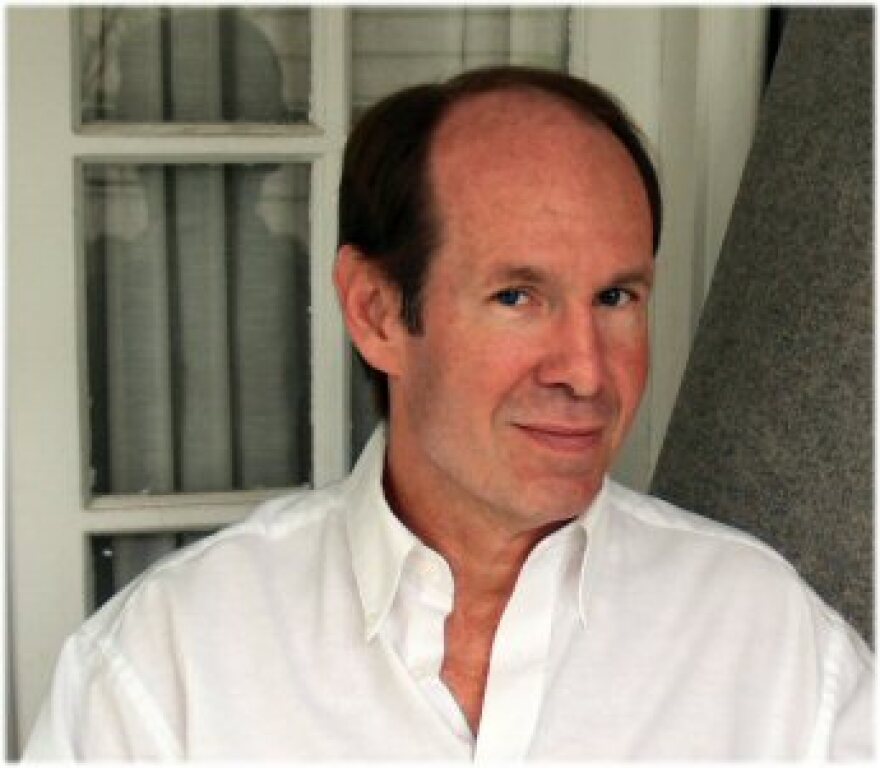In today’s Academic Minute, Dr. William Marling of Case Western Reserve University explains the initial and continuing popularity of Fitzgerald’s The Great Gatsby.
William Marling is a professor of literature at Case Western Reserve University in Cleveland, Ohio, where his research is focused on detective novels, globalization, and American Modernism. He has published books on Dashiell Hammett, Raymond Chandler, and is currently writing about the rise of “world literature.” He holds a Ph.D. from the University of California Santa Barbara.
Dr. William Marling – The Great Gatsby
The Great Gatsby was one of the many American novels published in the mid-1920s that sought to paint a portrait of the nation at a time many thought was extraordinary. The country had been through its first major international war, seen the beginning of the Prohibition and the feverish financial speculation and prosperity that we know as the ‘Roaring Twenties’. Everything was changing. Fitzgerald’s novel did not even win the 1925 Pulitzer Prize: it went to Edna Ferber’s So Big. That year saw the publication of such iconic texts as Sinclair Lewis’ Arrowsmith, Ernest Hemingway’s In Our Time, T. S. Eliot’s The Hollow Men, and Theodore Dreiser’s American Tragedy. All of them sought to describe a new understanding of life, and they continue to be read and taught to this day.
But The Great Gatsby was immediately recognized as an important work, and not only by critics. Ernest Hemingway said about Fitzgerald that “"If he could write a book as fine as The Great Gatsby I was sure that he could write an even better one." T. S. Eliot wrote that Fitzgerald’s novel "has interested and excited me more than any new novel I have seen, either English or American, for a number of years. ... In fact, it seems to me the first step that American fiction has taken since Henry James ...."
Critics praised the novel’s poetic language and thematic compression, but they also recognized its protagonist as an analysis of the myth of American ‘character’. Other analyses of the American character, by Sinclair Lewis and Willa Cather, published in 1925 touched the topic only in passing. Young Fitzgerald, from whom critics had only expected stylish sketches, with one blow destroyed the iconic image of the self-made hero and his clean money.
The novel’s success supported the Fitzgeralds’ lavish lifestyle for quite a while. Fitzgerald finished his next novel, Tender Is the Night, in 1932, after his wife Zelda had been committed to a mental institution because of her schizophrenia. Then sales of The Great Gatsby actually fell during the Great Depression, when America wanteded more ‘realistic’ narratives, like John Steinbeck’s The Grapes of Wrath (1939).
To cope with the debts caused by his wife’s health problems and his daughter’s education, Fitzgerald went to work in Hollywood. He never became a very good screenwriter, although it was films that suggested the topic of his last – and unfinished – novel The Last Tycoon. Wealth remained Fitzgerald’s central topic, but he never again captured the sound of money as well as in The Great Gatsby. He died of a heart attack in the apartment of his girlfriend Sheila Graham in Los Angeles in 1940.
Although The Great Gatsby has never been out of print, Fitzgerald himself was been forgotten by the 1940s. His work was rediscovered in the 1950s and its popularity has not waned since then.
Production support for the Academic Minute comes from Newman’s Own, giving all profits to charity and pursuing the common good for over 30 years, and from Mount Holyoke College.





